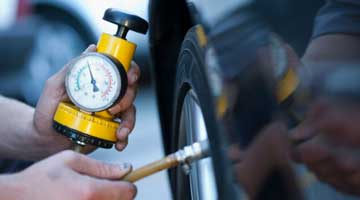Back in the 1960s and 1970s, it wasn’t unheard of for cars to have air-cooled engines. Today, water is the universal method of maintaining steady engine temperatures, while pistons and other moving components fire at incredibly high speed.
Ensuring that your car has enough water in its radiator to keep the engine cool is essential to prevent the dashboard temperature gauge steadily rising into the red, and risking mechanical damage or engine failure. This quick guide explains how to keep on top of this simple piece of car maintenance and avoid the need to make a claim on your car insurance policy.
Getting the mixture right
As we all know, water freezes at 0°C and expands into ice crystals. Since freezing temperatures are fairly common in the UK, your car's radiator needs more than just water to function effectively in cold conditions.
The missing ingredient is antifreeze, and the ratio of water to antifreeze should be roughly equal for best performance. Water can also boil and become steam due to the high pressures within car engines – mixing in antifreeze raises the boiling point enough to keep this from happening.

Finding the radiator reservoir
Topping up coolant levels in your car engine should always be done from cold, to avoid any scalding risk from pressurised steam in the radiator or pipes. Undo the bonnet with the catch that’s usually located behind the dashboard’s lower edge (your owner’s manual will tell you the exact location), and then feel underneath the bonnet’s central front panel for a latch to release it.
Some modern bonnets raise themselves automatically on hydraulics, while others require a moveable pole (usually resting in a cradle behind the headlights) to support their weight when fully opened.
The coolant reservoir cap should be on top of a transparent plastic container with min and max markings down the side, with the existing liquid levels visible inside. Unscrew the cap and set it aside on a shelf – don’t leave it nearby in case it gets knocked over and disappears into the engine.

Topping up and checking up
It doesn't matter which order the water and antifreeze are added, since they will combine when the engine next starts. What does matter is that the water is distilled or bottled, since tap water often contains minerals or suspended particles that can damage engine components and clog up the radiator pipes over time.
Pour in equal amounts of water and antifreeze using a funnel to avoid spillages. Antifreeze is highly poisonous to animals, so don’t let any spill on the ground where it may be walked on or ingested by pets. Ensure the liquid level is closer to the max mark on the reservoir than the min, and then firmly hand-tighten the radiator cap.
Finally, start the engine and leave it to idle for 10 minutes. Keep a close eye on the temperature gauge – it should settle midway up the dial, letting you know that radiator levels are sufficient to cool the car’s engine.













